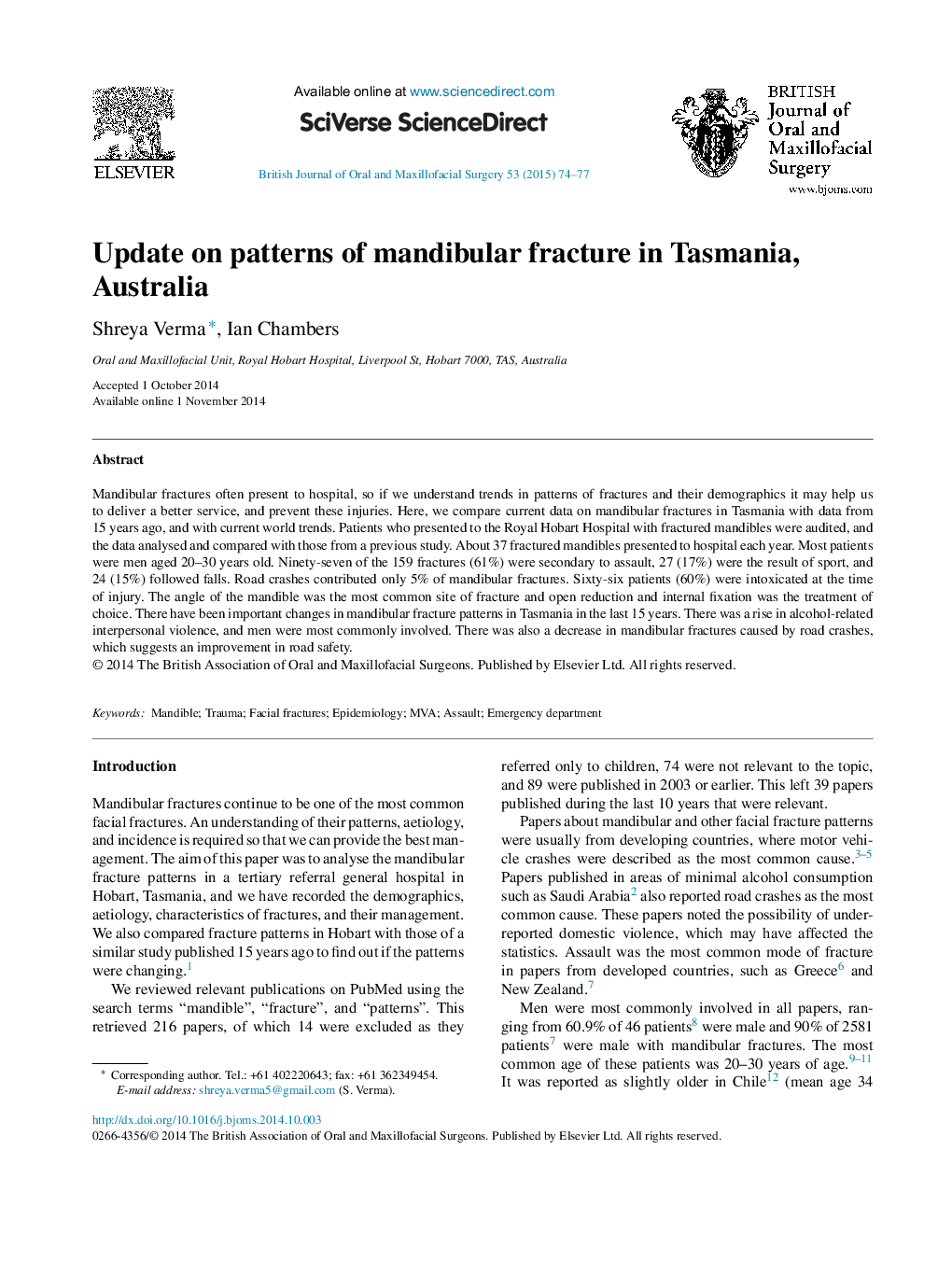| Article ID | Journal | Published Year | Pages | File Type |
|---|---|---|---|---|
| 6052135 | British Journal of Oral and Maxillofacial Surgery | 2015 | 4 Pages |
Abstract
Mandibular fractures often present to hospital, so if we understand trends in patterns of fractures and their demographics it may help us to deliver a better service, and prevent these injuries. Here, we compare current data on mandibular fractures in Tasmania with data from 15 years ago, and with current world trends. Patients who presented to the Royal Hobart Hospital with fractured mandibles were audited, and the data analysed and compared with those from a previous study. About 37 fractured mandibles presented to hospital each year. Most patients were men aged 20-30 years old. Ninety-seven of the 159 fractures (61%) were secondary to assault, 27 (17%) were the result of sport, and 24 (15%) followed falls. Road crashes contributed only 5% of mandibular fractures. Sixty-six patients (60%) were intoxicated at the time of injury. The angle of the mandible was the most common site of fracture and open reduction and internal fixation was the treatment of choice. There have been important changes in mandibular fracture patterns in Tasmania in the last 15 years. There was a rise in alcohol-related interpersonal violence, and men were most commonly involved. There was also a decrease in mandibular fractures caused by road crashes, which suggests an improvement in road safety.
Related Topics
Health Sciences
Medicine and Dentistry
Dentistry, Oral Surgery and Medicine
Authors
Shreya Verma, Ian Chambers,
